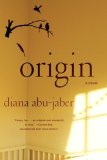Summary | Excerpt | Reading Guide | Reviews | Beyond the Book | Readalikes | Genres & Themes | Author Bio

A Novel
by Diana Abu-Jaber
I stare at the tuna fish: somewhere inside all this mayonnaise and pickle relish are shreds of
a once-living animal. I imagine its flash in water, the articulated scales, its
bright fish-mind. I try not to think about things like this. I try to just
eat lunch, like Pia was always saying, arms folded, gazing away from the
table.
Sylvie rubs her forehead with the flat of her palms. “It’s not normal at all. It’s kind of
bizarre.”
“Are we getting bloodstains? Prints?” Margo asks. Her kids are still small—Amahl and Fareed.
She carries their baby photos in her wallet; sometimes they wait for her in the
corridor after school. Frank, the Lab manager, gives Amahl colored chalks and
red pens and lets him draw in his notepads. He’s a good kid, cross-legged on
the floor, head lowered to his work.
“Everything’s clean,” Alyce says. “I mean, as far as I know. No unusual prints. Nothing in
the autopsy reports.”
But of course, we all know that the investigators wouldn’t bother sending cribs into the evidence
room unless someone on the scene thought there was something irregular. It
could be any fluky thing at all—a strange response from one of the family, a
odd smell in the air, or just the simple desire to double-check everything.
Cribs are unusual, but they were still just a few more items in the mountain of
evidence we have to analyze every day. You get inured to things in a crime lab,
and SIDS is such a commonplace tragedy. Sudden Infant Death is defined by its
mysterious nature—the examiner applies it to any unexplained infant death under
age one. When the cribs came in, I assumed that the SIDS diagnosis was correct
and that there really wasn’t any need to give them more than a cursory
going-over. I tracked the whirling ridges of mothers’ hands, babies’
rudimentary prints—so rarely do babies leave real traces, swimming through
their cradles on their backs, hands and feet waving empty.
“If I were her,” Margo says, quietly and deliberately, “and I thought there was even a
possibility of someone…having done what I thought they’d done. I’d hire a
professional.”
Alyce makes a breathy impatient sound. She stares at the takeout salad she orders every day from
the student services building a block up State. Somewhere in her early fifties
(she never tells), Alyce specializes in forensic chemistry; she helped start
the original Lab twenty years ago for the city—back when the county and city
had separate labs. And Sylvie—trace evidence—started six years later. Sylvie’s
36 and swears that if she doesn’t find a husband this year, she’s going to go
to a sperm bank.
The four of us have worked together, sharing the same office room and lab space for years.
It’s an odd arrangement—they brought Alyce over from Toxicology to temporarily
head up the management of Trace Evidence and she just stayed on. Sometimes it
seems that things are decent between us, all systems go. But often, tensions
rise up—Alyce and Margo especially like to fling tiny lightning bolts at each
other. Margo hints that Alyce should head back to her “own” division and leave
Trace to “people who know what’s going on.” Alyce says it’s better to have an
outsider manage an office because they’re more objective; then she’ll intimate
that Margo is a prima donna and that she spoils her children. Margo says that
until someone arranges to bear and raise a baby they basically don’t know the
first thing about anything.
Sylvie leans over her limp bologna sandwich and says, “What? You mean like hire a private eye?”
“A bunch of retired rent-a-cops. Christ, those guys aren’t gonna be able to help you,”
Alyce says. “Do you know what those people charge?”
Reprinted from Origin by Diana Abu-Jaber. Copyright (c) 2007 by Diana Abu-Jaber. With permission of the publisher, W.W. Norton & Company, Inc.
Your guide toexceptional books
BookBrowse seeks out and recommends the best in contemporary fiction and nonfiction—books that not only engage and entertain but also deepen our understanding of ourselves and the world around us.